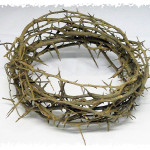 Nathan Busenitz serves on the pastoral staff of Grace Church and teaches theology at The Master’s Seminary in Los Angeles. In an article entitled, “Did Jesus become the literal embodiment of sin, or take on a sin nature, or become a sinner when He died at Calvary?” I very much appreciate his sound Biblical answer. He writes:
Nathan Busenitz serves on the pastoral staff of Grace Church and teaches theology at The Master’s Seminary in Los Angeles. In an article entitled, “Did Jesus become the literal embodiment of sin, or take on a sin nature, or become a sinner when He died at Calvary?” I very much appreciate his sound Biblical answer. He writes:
The heart of the question centers on Paul’s statement in 2 Corinthians 5:21: ”He made Him who knew no sin to be sin on our behalf, so that we might become the righteousness of God in Him.”
In what sense did Jesus become “sin on our behalf”? Does that phrase mean that Jesus literally became a sinner on the cross?
There are some today who teach that Jesus became a sinner (or took on a sin nature) at the cross. Benny Hinn is one such advocate. In a TBN broadcast, Hinn exclaimed:
“He [Jesus] who is righteous by choice said, ‘The only way I can stop sin is by me becoming it. I can’t just stop it by letting it touch me; I and it must become one.’ Hear this! He who is the nature of God became the nature of Satan when he became sin!” (Benny Hinn, Trinity Broadcasting Network, December 1, 1990)
Prosperity-preacher Kenneth Copeland echoes those same teachings. In Copeland’s words:
“The righteousness of God was made to be sin. He accepted the sin nature of Satan in His own spirit. And at the moment that He did so, He cried, ‘My God, My God, why hast thou forsaken me?’ You don’t know what happened at the cross. Why do you think Moses, upon instruction of God, raised the serpent upon that pole instead of a lamb? That used to bug me. I said, ‘Why in the world would you want to put a snake up there; the sign of Satan? Why didn’t you put a lamb on that pole?’ And the Lord said, ‘Because it was a sign of Satan that was hanging on the cross.’ He said, ‘I accepted, in my own spirit, spiritual death; and the light was turned off.’” (Kenneth Copeland, “What Happened from the Cross to the Throne,” 1990, audiotape #02-0017, side 2)
On another occasion, Copeland reiterates that same teaching: Continue reading

